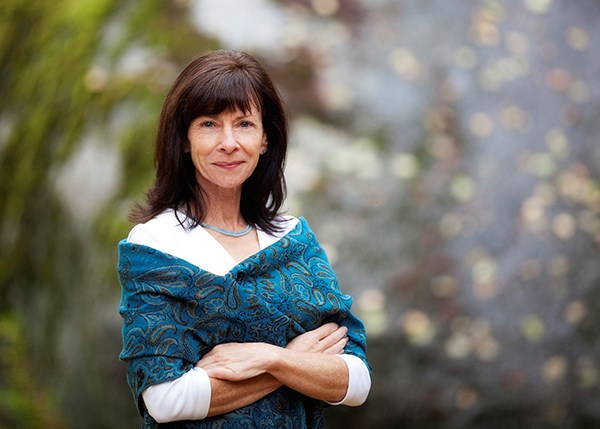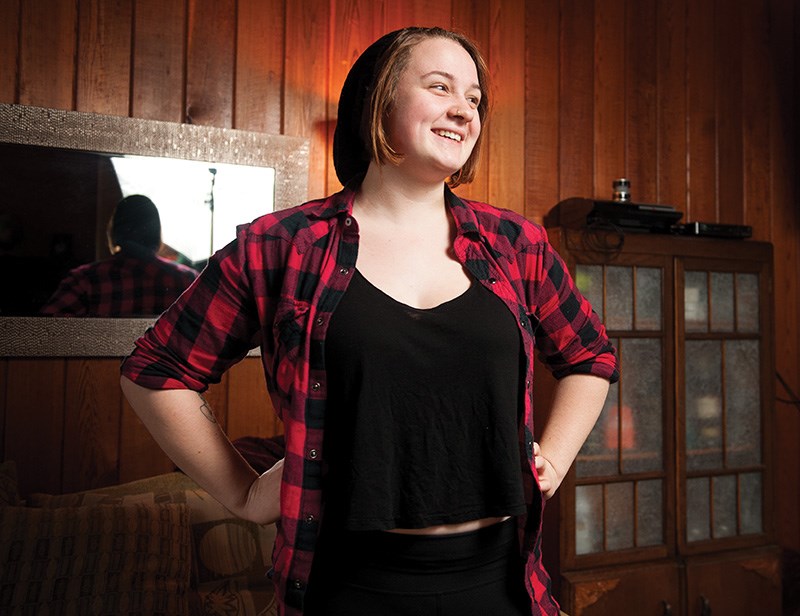Squamish is known as the outdoor recreation capital of Canada, but according to some, the community isn’t always inclusive in what qualifies as healthy and fit.
The uber-active lifestyle that is promoted in the district has bred a subtle prejudice felt by those who aren’t seen as thin, they say.
Fourth year Quest University student Laura Finkler loves to get outside and hike, strike a yoga pose or hit the trails on her mountain bike.
She is fit, but not stick thin, and said there’s pressure in Squamish to both exercise excessively and conform to a physical ideal of fitness.
“Squamish has such a culture of thinness and fitness.”
Finkler said this pressure is amplified on campus.
“Being fit and exercising at least every day is kind of the norm,” she said.
“I definitely find myself thinking of all the ways I can lose fat and exercise and I feel lazy, but it is Catch 22 where I also know that all these ideas are messed up anyways, and I shouldn’t be thinking about that.”
Hannah Jarvis, 20, said the pressure to conform to a certain body type in Squamish is something she knows well.
“There is this very young culture coming in. It is one of the fastest growing cities and a lot of young families that are very much the rock climbing, yogi, healthy adventurous young people… which is awesome, but it does create this kind of warped idea of what healthy is,” she said.
“I do rock climb and I do all the backpacking stuff, so I find I am in this interesting place where I fit within that community… but my body type doesn’t look like it necessarily.”
The judgment is not ever overtly expressed or acknowledged, but it is there, she said.
“The type of food you are eating on the trails… Who is encouraged to go swimming in their bra and underwear and who isn’t? And it is always just very subtle, micro-aggression sort of things,” she said.
The idea that you have to be thin to be fit is one that plus-sized athlete, author and advocate Louise Green actively fights against.
“It is super white and western because we are conforming to an ideal: thin, white, privileged, young,” she said.
Green has organized an exercise workshop with the Squamish Nation.
She also founded a chain of fitness studios called Body Exchange geared to heavier athletes.
“When you are in those environments like Squamish and central Vancouver, you are going to feel [pressure] even more because there is so much fitness around you that is portraying this one type of athlete,” she said.
“We are living in a society that measures by body mass index standards, and I mean it is archaic…. It was invented in the 1800s and it was not intended for individual use. It was intended for populations, to do studies.”
According to the Provincial Health Services Authority (PHSA), obesity is linked to several health issues such as sleep apnea, Type 2 diabetes, asthma, gallbladder disease, osteoarthritis, chronic back pain, some cancers, cardiovascular diseases and depression. But the medical profession has also acknowledged the issue is more complex than a simple measurement.
“Improvements to physical health can be made through changes in physical activity and diet, with little or no weight loss,” said Diana Daghofer in the 2013 publication titled Technical Report: From Weight to Well-Being: Time for a Shift in Paradigms?

The report also notes that along with a rise in obesity has come a “shadow epidemic” of weight bias that does harm to individuals’ self-esteem and mental well-being.
Health Canada does define obesity by a high BMI and weight circumference but also acknowledges the classification isn’t a fulsome way to judge health, listing a person’s age, genetics, build and other factors that contribute to a person’s health.
Green partially blames the media for the impression that fit means thin.
“We are conditioned as a society, because of our advertising and media and the media headlines where we hear so much about obesity, to believe that when we see somebody that is of a diverse body size that they are immediately ‘unhealthy,’ when there is no basis to support it,” she said.
“Yes, some people who are a certain BMI are going to find themselves with some health issues, but that doesn’t necessarily mean that everyone outside of a perceived BMI is unhealthy.”
Finkler agrees that the coverage of obesity is overdone.
“We scare ourselves too much about the ‘obesity crisis.’ It is portrayed like it is going to be a natural disaster that is going to hit us one day.”
It isn’t healthy for people to entirely blame media messaging, according to Helen Croza, a registered clinical counsellor who has a masters degree in body-oriented psychology and has worked with women on body image issues for 35 years.
“When women fall into blaming media images and the culture, it only disempowers them,” she said. “Young girls and teenagers will be influenced by what they see around them. But the message they get from their mothers, teachers and mentors who model what it means to have a healthy relationship with their body and food is more powerful.”
The definitions of fitness and health are about more than what bodies look like, she said.
“I see ‘physical fitness’ as our ability to move and explore the potential of our individual body in its strength, speed, endurance, and flexibility so that we can enjoy our life,” she said. “And ‘health’ as our ability to fully enjoy our life and body and the ability to adapt and weather life with a buoyant spirit.”
Ultimately people need to be their own best guides in deciding at what fitness level and weight they feel best.
In Squamish and most of western culture, women seem to obsess about weight more than men. Croza said this is a product of gender inequality.
Historically, women didn’t have rights or power to control their lives, and so both their looks and bearing children were very important.
“If you don’t have economic power, your power is what you look like. The message passed down – ‘Be attractive to get a husband’ – is still heard by little girls.”
As recently as the 1960s, a single woman could not get a credit card, and a married woman needed her husband’s signature. That history still plays into the way women see themselves and their bodies, she said, adding that it isn’t just overweight women who are shamed.
“We criticize women for being thin,” Croza said. “All the judging and put-downs have to stop.”
A metaphor that runs in the background of our culture sees the body as a machine, she said, that people need to just put in the “right” fuel and choose the best exercise to burn it and they’ll have that perfect healthy body.
“We’re not a machine. Humans are fed by relationships, hobbies, acts of kindness. We are so much more, but we don’t factor that in when we talk about health and fitness,” she said.
For Jarvis, staying confident in the face of messaging that fit means thin comes down to self-talk.
“Check your internal dialogue,” she said. “What are the things that you are saying to yourself? And try to be very intentional about the things that you say to your body.”
Jarvis said she also surrounds herself with people who are confident and reminds herself how amazing the human body is.
“My body can do and has done some incredible things, and so I need to love it and respect it, and I need to speak kindly to it and nourish it,” she said.
“When you see your body as something to be revered and loved instead of hated, then it changes your whole dialogue of how you see your body.”




